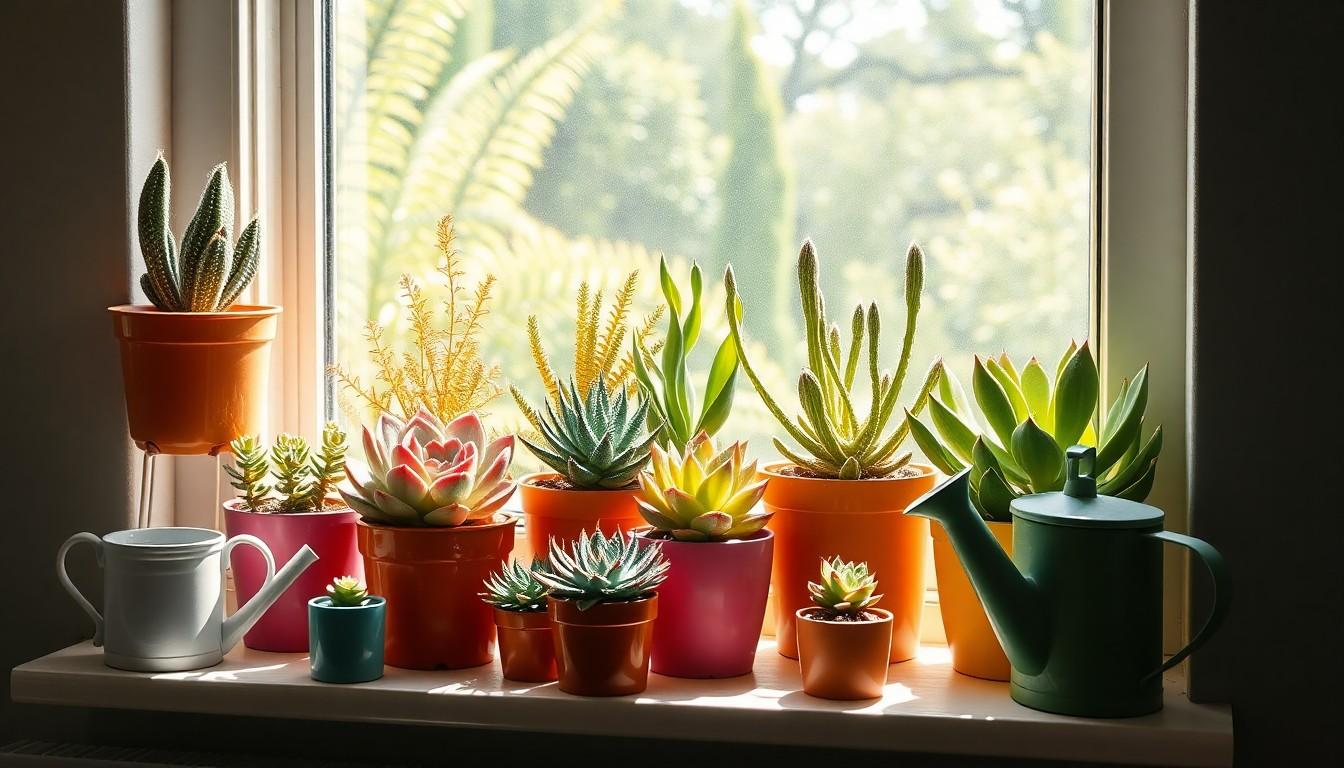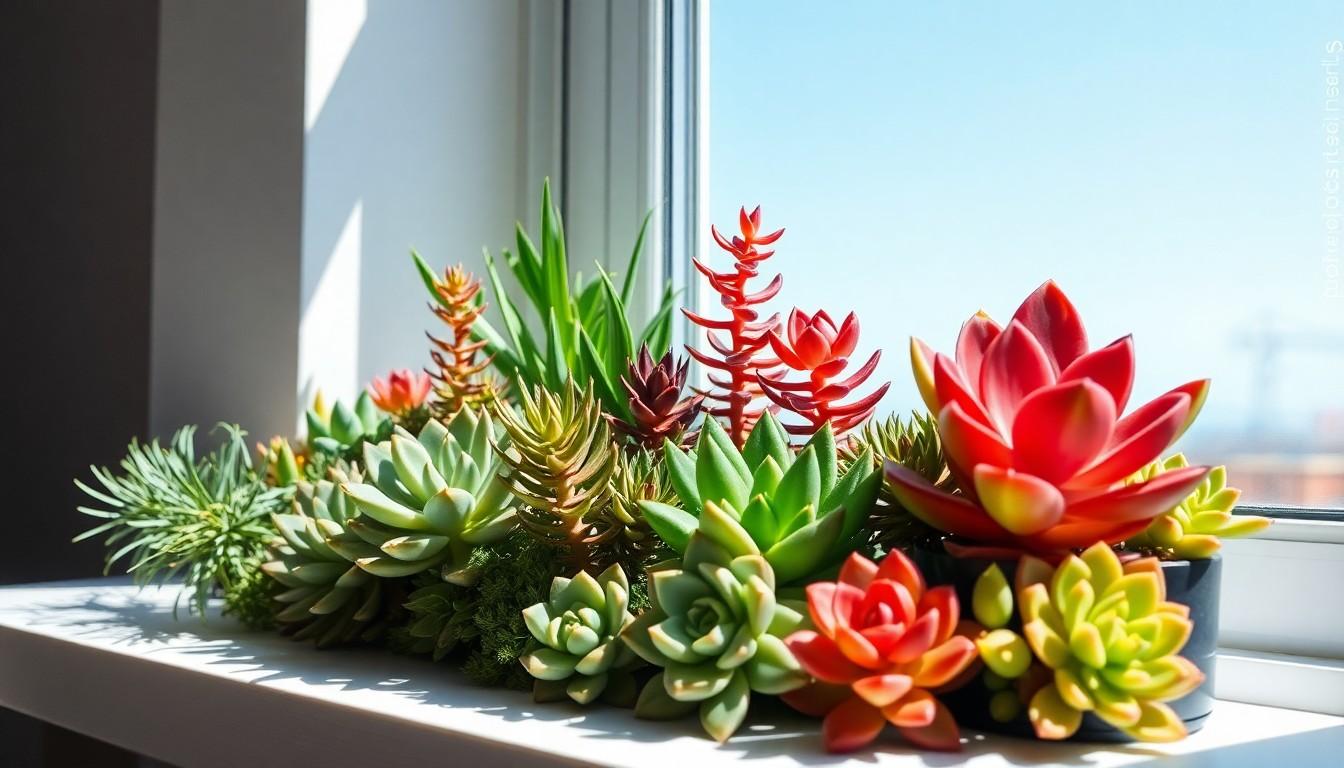Phone:
(701)814-6992
Physical address:
6296 Donnelly Plaza
Ratkeville, Bahamas.

Succulents are the trendy darlings of the plant world, boasting low maintenance and a charming aesthetic. But what happens when these delightful green companions start looking more like sad little blobs? If your once-thriving succulents are now auditioning for a role in a horror film, it’s time to investigate the mystery behind their decline.
Many succulent owners encounter issues that lead to declining plant health. Understanding these common problems helps in reviving succulents.
Overwatering often causes root rot in succulents. This condition arises when the roots sit in soggy soil for too long. Signs include yellowing leaves and a mushy texture. Compact soil that doesn’t drain well contributes to this problem. Ensuring pots have drainage holes aids in preventing excess moisture. Watering succulents only when the soil is completely dry promotes better health.
Underwatering can be just as detrimental to succulents. Insufficient moisture leads to shrivelled leaves that may drop off. Dry soil indicates that the plant needs hydration immediately. Environmental factors such as high temperatures and direct sun exposure increase water needs. Checking soil frequently helps determine when to water. Regularly hydrating succulents promotes their vibrancy and overall well-being.

Environmental conditions play a crucial role in the health of succulents. Understanding these factors helps in diagnosing issues when plants start to decline.
Insufficient sunlight negatively affects succulents. These plants thrive in bright, indirect light. Lack of adequate exposure leads to elongated stems and pale leaves. Growth slows down as succulents stretch toward the light source. Placing them near windowsills or using grow lights can enhance their vitality. Optimal light levels usually range between six to eight hours daily. Observing changes in color and form signals a need for more light.
Extreme temperatures can harm succulents. Exposure to intense heat or freezing conditions results in stress. High temperatures often cause leaf scorch, while cold can lead to mushy leaves and root damage. Ideally, succulents prefer temperatures between 65°F and 80°F. Maintaining stable conditions prevents significant fluctuations that can shock the plants. Protecting succulents during harsh weather helps preserve their health.
Pests and diseases can significantly affect the health of succulents. Recognizing these threats early increases the chance of recovery.
Mealybugs often appear as white cotton-like masses on leaves and stems. These pests suck sap, leading to yellowing foliage and stunted growth. Aphids accumulate around new growth, causing distortion and discoloration. Additionally, spider mites produce fine webbing and result in speckled leaves. To control these pests, regularly inspect succulents and employ insecticidal soap or neem oil for treatment.
Root rot manifests as mushy roots and darkened stems, indicating overwatering. Fungal infections often produce black or brown spots on leaves. Furthermore, powdery mildew causes a white, powdery coating and thrives in high humidity. Catching these symptoms early allows for prompt action, such as improving drainage or adjusting watering habits. Regular monitoring of succulents helps maintain their health and boosts resistance to pests and diseases.
Maintaining succulent health requires attention to several key factors. Implementing proper care techniques makes a significant difference in preventing decline.
Adequate watering techniques are essential for succulent vitality. He or she should water succulents thoroughly, allowing excess water to drain completely. Checking soil moisture before the next watering helps prevent both overwatering and underwatering. Soil that feels dry to the touch indicates it’s time for hydration. Utilizing pots with drainage holes further aids in avoiding root rot while maintaining healthy moisture levels. Remember to adjust watering frequency according to seasonal changes; succulents require less water during dormancy.
Choosing the right soil mixture contributes to succulent success. A well-draining soil blend, such as cactus or succulent mix, provides necessary aeration. Additionally, incorporating perlite or coarse sand boosts drainage and encourages healthy roots. Proper potting conditions include selecting containers with drainage holes to allow excess moisture to escape. The right pot size matters too; pots that are too large retain excess moisture. Repotting every couple of years refreshes soil nutrients and promotes growth, ensuring a thriving environment for succulents.
Understanding the reasons behind succulent decline is vital for any enthusiast. By paying attention to watering habits light exposure and environmental conditions it’s possible to create a thriving environment for these resilient plants. Regular monitoring and prompt action against pests and diseases can significantly enhance their longevity and vitality. With the right care and attention succulents can flourish and continue to bring beauty to any space. Embracing these best practices will ensure these beloved plants remain healthy and vibrant for years to come.